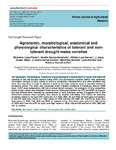
Please use this identifier to cite or link to this item:
http://ricaxcan.uaz.edu.mx/jspui/handle/20.500.11845/920Full metadata record
| DC Field | Value | Language |
|---|---|---|
| dc.contributor.other | 0000-0001-7861-4780 | es_ES |
| dc.contributor.other | https://orcid.org/0000-0002-3961-2608 | - |
| dc.contributor.other | https://orcid.org/0000-0001-7861-4780 | - |
| dc.coverage.spatial | Zacatecas, México | es_ES |
| dc.creator | Luna Flores, Maximino | - |
| dc.creator | García Hernández, Serafín | - |
| dc.creator | Lara Herrera, Alfredo | - |
| dc.creator | Avelar Mejía, Jesús | - |
| dc.creator | Llamas Llamas, Jesús | - |
| dc.creator | Luna Estrada, Maximino Gerardo | - |
| dc.creator | Ruiz de la Riva, Roberto | - |
| dc.date.accessioned | 2019-04-03T16:33:35Z | - |
| dc.date.available | 2019-04-03T16:33:35Z | - |
| dc.date.issued | 2014-05 | - |
| dc.identifier | info:eu-repo/semantics/publishedVersion | es_ES |
| dc.identifier.issn | 1991-637X | es_ES |
| dc.identifier.uri | http://ricaxcan.uaz.edu.mx/jspui/handle/20.500.11845/920 | - |
| dc.identifier.uri | https://doi.org/10.48779/z92q-fk51 | - |
| dc.description.abstract | The agronomic, morphological, anatomical, and physiological characteristics of native and improved varieties of rain fed drought tolerant maize (DTV) and non-tolerant varieties (NDTV) was compared. Correlation analysis of each variety in terms of production characteristics and other variables was done. This was done in order to observe if some of the latter could be use as selection indices of productive plants. The study was conduced under irrigated conditions in Zacatecas, Mexico (2280 musl; 15.8 C mean temperature; 448 mm of annual rainfall average). The average of then fully competitive plants of each variety was evaluated. There wer eno differences between DTV and NDTV as a gropu, but they differed when considering characteristics of each individual variety. It suggests that to find differences between these varieties, they should be studies indivdually. The indices for selecting productive plants in the aerly DTV native are C5: NGC, NRC, NL and W5G for both grain and stubble; in the DTV semi early native: C7: high values of: NKR and low: EH, DMF, DS and PH for grain, also high values of: W5G, V5G, NSP and NPBT for stubble; in the DTV native semi early C-23, high values of: W5G and low one of PL for grain, also high values of: W5G, V5G and EH and low of: ASY, NRC and ILE, for stubble. | es_ES |
| dc.language.iso | eng | es_ES |
| dc.publisher | Academi Journals | es_ES |
| dc.relation.uri | generalPublic | es_ES |
| dc.rights | Atribución-NoComercial-CompartirIgual 3.0 Estados Unidos de América | * |
| dc.rights.uri | http://creativecommons.org/licenses/by-nc-sa/3.0/us/ | * |
| dc.source | African Journal of Agricultural Research, Vol 9, No 21, mayo 2014, pp. 1663-1671. | es_ES |
| dc.subject.classification | CIENCIAS AGROPECUARIAS Y BIOTECNOLOGIA [6] | es_ES |
| dc.subject.other | Ze mays L. | es_ES |
| dc.subject.other | native varieties | es_ES |
| dc.subject.other | rain fed | es_ES |
| dc.subject.other | grain yield | es_ES |
| dc.subject.other | stubble yield | es_ES |
| dc.title | Agronomic, morphological, anatomical, and physiological characteristics of tolerant and non tolerant drought maize varieties | es_ES |
| dc.type | info:eu-repo/semantics/article | es_ES |
| Appears in Collections: | *Documentos Académicos*-- UA de Agronomía | |
Files in This Item:
| File | Description | Size | Format | |
|---|---|---|---|---|
| Agronomic, morphological.pdf | 498,34 kB | Adobe PDF |  View/Open |
This item is licensed under a Creative Commons License
